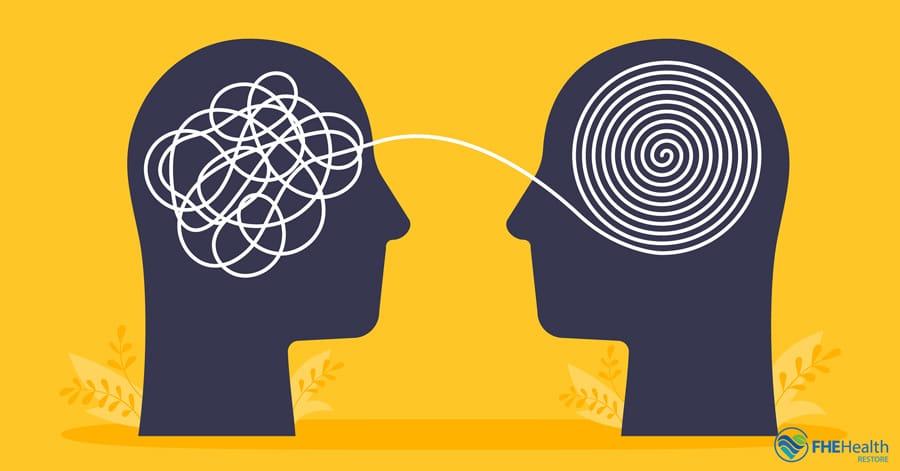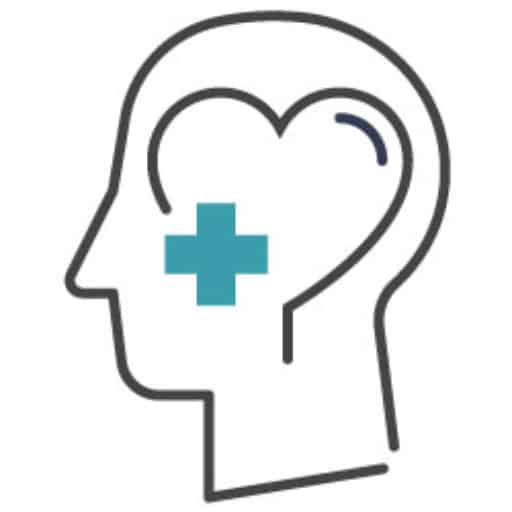If you’re suffering from substance abuse, the difference between your past and present selves may shock you. Thinking of your life before addiction raises questions — mainly, what changed? The answer lies in a simple shift between syntonic vs. dystonic behaviors.
While taking a few extra drinks or doses during the week might seem like a fun stress reliever, there comes a point where they become impossible to avoid. Egosyntonic and egodystonic behaviors explain why recreational substance use often turns into a full-blown addiction, and why your behavior doesn’t match your self-perception. To understand them, you must first get to know your ego.
Understanding the Ego
Psychoanalyst Sigmund Freud first coined the term “ego” in his 1923 text The Ego and the Id. Essentially, ego refers to a person’s sense of self. According to Freud, the ego is in constant flux between primitive, animalistic desire and moral righteousness.
Many people are able to balance the two sides of the ego, but some are unable to resist the side that drives desire. When this happens, they give into the Id, or their animalistic side. If left unchecked, the Id causes you to act against your sense of self, turning you into someone you never thought you’d become.
From an addiction standpoint, the Id represents the side of you that urges you to have just one more drink or one more dose. Over time, you’ll be unable to resist this urge, which is where the concept of syntonic vs. dystonic behavior comes in.
What Does Egosyntonic Mean?
Egosyntonic behavior stems from the idealistic part of your ego, which Freud called the “super-ego.” This is what drives you to act in line with your personal values.
If your ideal self is someone who works hard and gets up early to arrive at the office on time, for example, that is a syntonic behavior. This part of your ego acts as a moral compass and its goal is to ultimately turn you into the person you wish to be. No matter the behavior, if it aligns with your ideal self, it’s syntonic.
Syntonic behavior doesn’t just fuel your super-ego. It also compels you to act appropriately in a given situation, preventing you from responding inappropriately. In this way, it acts as a kind of safety net that directs your behavior to achieve a desired result.
Giving in to addictive cravings likely isn’t egosyntonic for you. For these, you’ll need to look at the other side of the ego — the one that governs dystonic behavior.
What Does Egodystonic Mean?
Where syntonic behavior arises from the super-ego, egodystonic comes from the Id. Rather than being aligned with your ideal self, this kind of behavior is indulgent and short-sighted. Building on the previous example, if you want to excel at work but stay in bed all day instead, you’re exhibiting egodystonic behavior.
You may not notice egodystonic behavior right away. In some cases, it could take weeks or years before you recognize it. Not all dystonic behaviors are necessarily harmful. But whether it’s due to external pressure or internal guilt, they tend to make you feel shame or distress.
Substance abuse is one example of a dystonic behavior that can worsen over time. While trying a drug or having too much to drink occasionally may harm you only slightly, continuing to give in to your cravings could lead to a dystonic spiral. Additionally, the shame you feel from engaging in such destructive behaviors could make them even more addictive, resulting in a vicious cycle.
Syntonic vs. Dystonic Behavior
The distinction between egodystonic vs. egosyntonic behavior isn’t always clear. For most people, it’s this gray area that leads to self-destruction in the form of an addiction.
Just because syntonic behavior aligns with your image of an ideal self doesn’t mean it’s inherently good. You may start out using substances in a way that feels syntonic to you. For example, drinking in a social setting might make you feel connected to others, bringing you satisfaction without any negative consequences.
With time, you might feel the need to drink more frequently, or in greater quantities, to get the same effects. As you increasingly rely on substances to feel normal or satisfied, the behavior becomes less enjoyable and more compulsory. In this way, syntonic behavior becomes dystonic.
The subtle shift from syntonic to dystonic explains why those with addictions act in ways that don’t align with their ideal selves. They may not realize what’s happening until it’s too late. Even when the consequences are obvious, they may already be deep in a cycle of addiction.
Recognizing a Syntonic to Dystonic Shift
It can be a challenge to recognize egodystonic vs. syntonic behaviors. When an activity becomes dystonic, it usually does so gradually. You might not notice the shift until you start to experience negative effects.
One of the best ways to prevent syntonic behavior from becoming dystonic is to remain aware of how your behavior makes you feel. If you notice yourself forming unwanted habits, early intervention can prevent long-term consequences. This is especially true for habits like drinking and recreational drug use, which can result in dangerous addictions.
Asking yourself if an activity aligns with the image of your ideal self can also be a powerful way to combat dystonic behavior. This introspection can help highlight behavior you can work to change.
That said, substance abuse disorder is a complex disease that affects over 20 million people in the United States, and awareness of your dystonic behaviors may not be enough to prevent it. Professional help is likely needed to identify and address egodystonic behavior that’s negatively affecting your life through addiction.
If you’re struggling with addiction, now’s the time to seek professional help. At Restore Mental Health, we’re committed to helping you get your life back on track. Contact us today to take your first step on the road to recovery.



